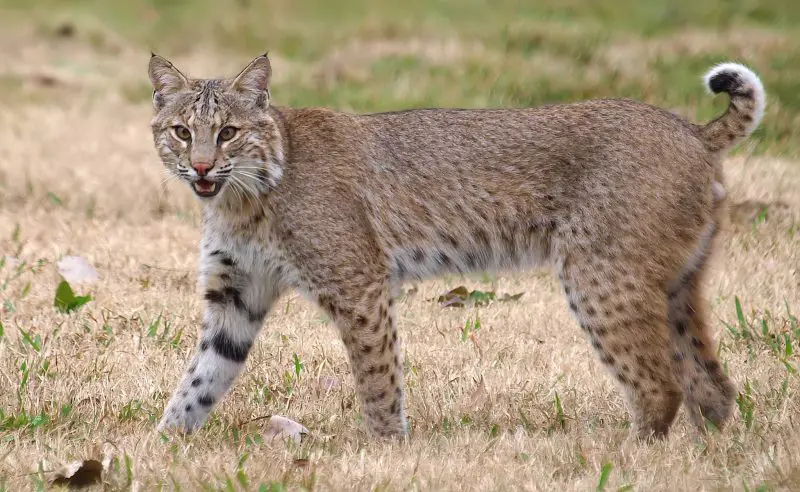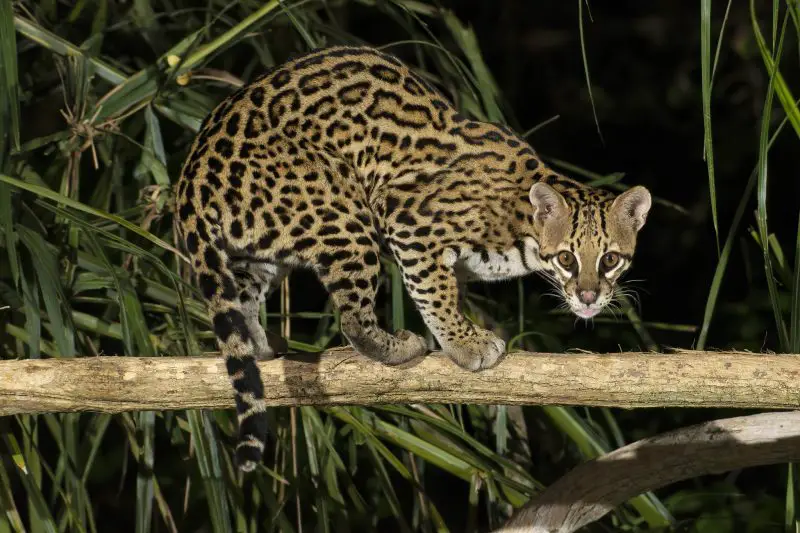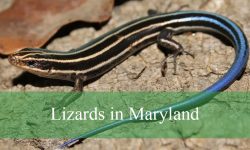The deserts and mountains of Arizona shelter a remarkable variety of wild cats, including elusive cougars and secretive ocelots. These cats play a crucial role in maintaining the balance of the state’s ecosystems.
While some species like the bobcat are relatively common and adaptable, others such as the jaguarundi and ocelot are extremely rare, making sightings a special experience for wildlife enthusiasts and photographers. Understanding their habits, habitats, and identifying features is key to appreciating these remarkable predators.
In this guide, we’ll explore the four wild cat species in Arizona, providing detailed descriptions, size information, behaviors, habitats, and tips on where and when to spot them safely. Whether you’re a nature lover or a curious traveler, this comprehensive overview will help you identify Arizona’s wild cats with confidence.
Different Types of Wild Cats Found in Arizona
Cougar (Puma concolor)

The cougar, also known as the mountain lion or puma, is the largest wild cat in Arizona. Adult males typically weigh between 115–220 pounds (52–100 kg), while females are smaller at 64–141 pounds (29–64 kg). Their body length ranges from 3.25 to 5.25 feet (1–1.6 m) with an additional tail length of 2–3 feet (0.6–0.9 m). Cougars have a sleek, muscular build, with a tawny or light brown coat that helps them blend into desert, mountain, and forested habitats. Their face often appears rounded with small, pointed ears, and a distinctive long tail tipped in black.
Cougars are solitary and highly territorial animals, usually maintaining a home range of 50 to 150 square miles depending on prey availability. They are primarily nocturnal and crepuscular, being most active during dawn and dusk. Despite their size, cougars are excellent climbers and swimmers, which allows them to navigate Arizona’s varied landscapes from the rocky canyons of the Grand Canyon to forested regions in the north.
Their diet mainly consists of deer, elk, and smaller mammals, but they are opportunistic hunters and may also prey on javelinas, rabbits, and even livestock in rare cases. Cougars are ambush predators, relying on stealth and strength rather than speed, using the cover of terrain to stalk and pounce on prey with incredible force.
Cougars are widely distributed across Arizona but are rarely seen by humans due to their elusive nature. Sightings are most common in the mountainous regions of northern and southeastern Arizona. Conservation efforts have helped maintain stable populations, though human-wildlife conflicts can occur near rural communities and livestock areas.
Bobcat (Lynx rufus)

The bobcat is a medium-sized wild cat native to Arizona, smaller than the cougar but larger than a domestic cat. Adult bobcats typically weigh between 15–40 pounds (7–18 kg) and measure 2–4 feet (0.6–1.2 m) in body length, with a short, bobbed tail of 5–7 inches (12–18 cm). Their fur is tan to brown with black spots and streaks, and they have distinctive tufted ears and ruffed cheeks. This camouflage allows them to blend into the scrub, desert, and woodland areas across Arizona.
Bobcats are solitary, territorial animals with home ranges from 1 to 20 square miles depending on habitat quality and prey abundance. They are primarily crepuscular, hunting at dawn and dusk, and are capable of climbing trees and swimming when necessary. Bobcats are highly adaptable, thriving in deserts, forests, and even suburban areas.
They prey on rabbits, rodents, birds, and occasionally deer, employing stealth and ambush techniques. Bobcats are known for their patience and stalking skills, often waiting near trails or burrows before pouncing. Despite their small size, they are formidable predators, capable of taking prey larger than themselves.
Bobcats are widely distributed throughout Arizona, with higher concentrations in forested and brushy areas. They are elusive, and sightings are uncommon, but their presence is often indicated by tracks, scat, or scratch marks on trees. Bobcats are protected in Arizona, and their populations are considered stable.
Jaguarundi (Herpailurus yagouaroundi)

The jaguarundi is a rare, small wild cat found in southern Arizona, though sightings are extremely uncommon. Adults weigh between 8–20 pounds (3.5–9 kg) and measure 20–30 inches (50–76 cm) in body length, with a long tail of 12–22 inches (30–55 cm). They have a slender, elongated body, short legs, and a uniform coat color ranging from grayish-brown to reddish, which sets them apart from the spotted patterns of other wild cats.
Jaguarundis are primarily solitary and elusive, preferring dense brush, riparian corridors, and thorn scrub habitats. They are active during the day (diurnal), unlike most other wild cats in Arizona, which increases their chances of encountering prey in bright daylight. Their climbing skills are limited compared to bobcats and cougars, but they are agile on the ground and can swim when necessary.
Their diet includes small mammals, birds, lizards, and occasionally insects. Jaguarundis are opportunistic hunters, using stealth and speed to catch prey. They are also known for their high-pitched calls, which are unusual among wild cats in Arizona.
Due to habitat loss and their secretive nature, jaguarundis are extremely rare in Arizona, primarily confined to the southernmost desert regions near the Mexico border. Conservationists monitor sightings and habitat corridors to support the few individuals that exist in the state, making them one of Arizona’s most elusive felines.
Ocelot (Leopardus pardalis)

The ocelot is an extremely rare wild cat in Arizona, primarily inhabiting desert and riparian zones near the Mexico border. Adult ocelots weigh between 18–34 pounds (8–15 kg) and measure 28–35 inches (70–90 cm) in body length, with a tail of 12–16 inches (30–40 cm). Their striking coat features dark rosettes and spots on a golden to tawny background, giving them a highly camouflaged appearance in dense vegetation.
Ocelots are solitary and nocturnal, spending most of their time hunting or resting in dense cover. They are skilled climbers and swimmers, which helps them navigate the scrubby desert terrain and riparian forests of southern Arizona. Their behavior is secretive, and very few individuals have been documented in the wild.
Their diet consists mainly of small mammals, birds, reptiles, and occasionally amphibians. Ocelots are ambush predators, using the cover of darkness to sneak up on prey with remarkable stealth. They are highly territorial, marking their range with scent to ward off other cats.
Due to their rarity and limited distribution, ocelots in Arizona are considered critically endangered. Conservation efforts focus on protecting riparian habitats and maintaining corridors that connect populations in Arizona to those in Mexico. Sightings are extremely uncommon, making the ocelot one of the most elusive wild cats in the state.
Best Time and Places to See Wild Cats in Arizona
Cougars are elusive and rarely seen, but the best time to spot them is during dawn or dusk, when they are most active hunting. Northern Arizona, particularly the mountainous regions around the Grand Canyon, Coconino National Forest, and White Mountains, offers higher chances of sightings. Trail cameras and careful observation near deer trails or water sources can increase your odds. Even then, sightings are very rare, and maintaining a safe distance is crucial for both human and cougar safety.
Bobcats are primarily active at dusk and during the night, though they can occasionally be seen during the day in less disturbed areas. They are widely distributed across Arizona, with higher concentrations in forested areas, desert scrublands, and near riverbanks. Look for tracks, scat, or scratch marks to confirm their presence. Wildlife watchers often have better luck spotting bobcats in remote or lightly trafficked areas where human activity is low.
The jaguarundi is diurnal, so daytime observations are most likely, though sightings remain extremely rare. Southern Arizona, particularly riparian corridors and dense thorn scrub areas near the Mexico border, is their primary habitat. Early morning and late afternoon in shaded, dense vegetation areas improve your chance of seeing them. Still, patience and quiet observation are key due to their secretive nature.
Ocelots are nocturnal and very elusive, making nighttime observation using infrared trail cameras the most effective method. They inhabit southern Arizona riparian zones and desert forests near the Mexican border. Ocelots prefer dense cover, so areas with thick vegetation along washes or rivers are ideal. Human encounters are extremely rare, so sightings are often limited to wildlife monitoring projects.
Frequently Asked Questions about Wild Cats in Arizona
What wild cats are native to Arizona?
Arizona is home to four primary wild cat species: cougar (mountain lion), bobcat, jaguarundi, and ocelot. Cougars and bobcats are the most commonly found, while jaguarundi and ocelot are extremely rare in the state.
Are wild cats dangerous to humans?
While wild cats are generally shy and avoid humans, cougars pose the greatest risk due to their size and strength. Bobcats are small and rarely aggressive, while jaguarundi and ocelots are very unlikely to encounter people. Always maintain a safe distance and avoid approaching them.
What is the best way to see wild cats in Arizona?
Wild cats are elusive, so patience and observation at dawn, dusk, or nighttime (depending on the species) is key. Using binoculars, trail cameras, or guided wildlife tours in protected forest and desert areas increases your chances.
Can wild cats be found near urban areas?
Bobcats and, occasionally, cougars can venture near rural communities or suburban outskirts, especially where prey like deer or rabbits are abundant. Jaguarundi and ocelots rarely come near human settlements due to their secretive habits.
Are these wild cats protected in Arizona?
Yes, all wild cats in Arizona are protected under state and federal wildlife regulations, particularly ocelots and jaguarundis due to their rarity. Hunting or disturbing these animals is illegal, and conservation efforts focus on habitat protection and population monitoring.






